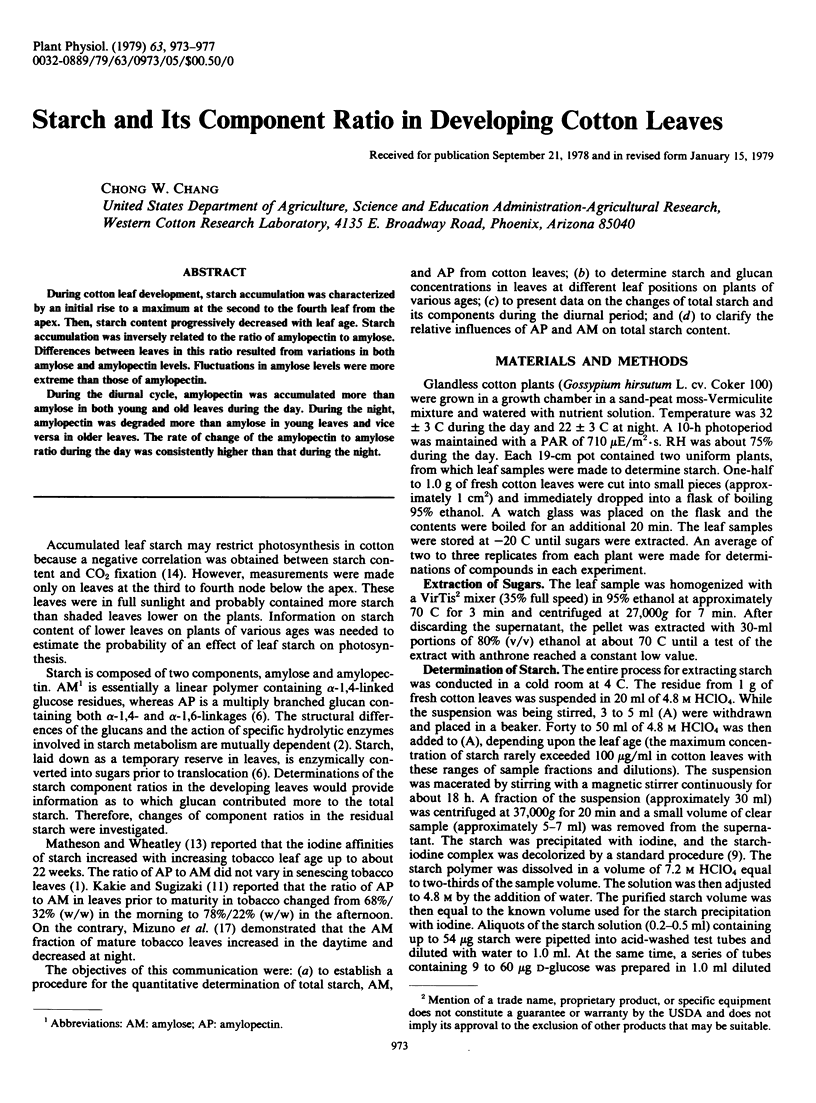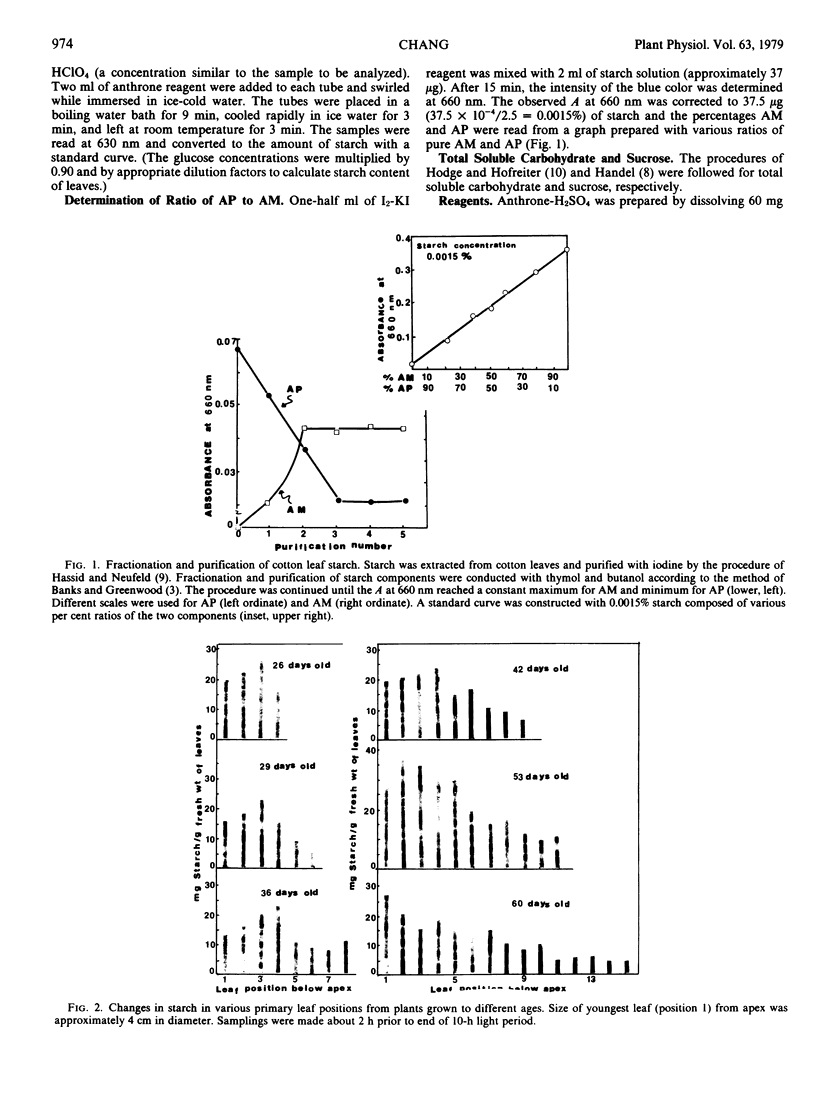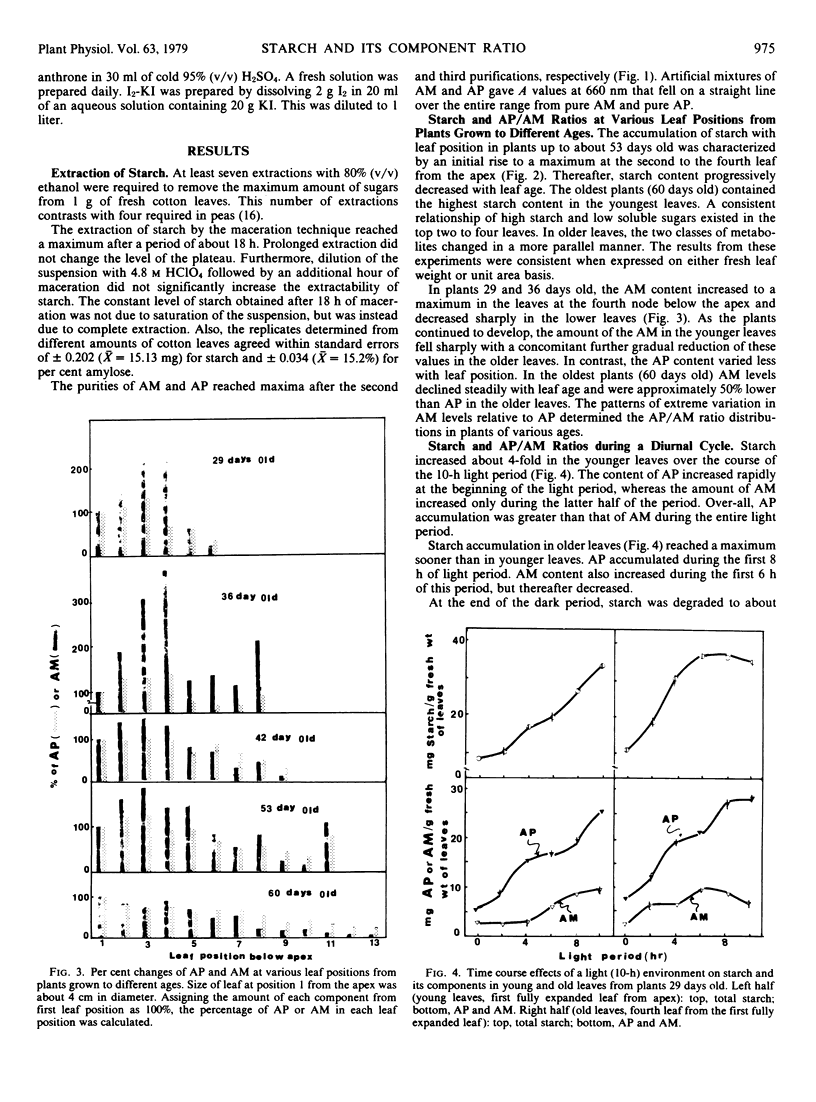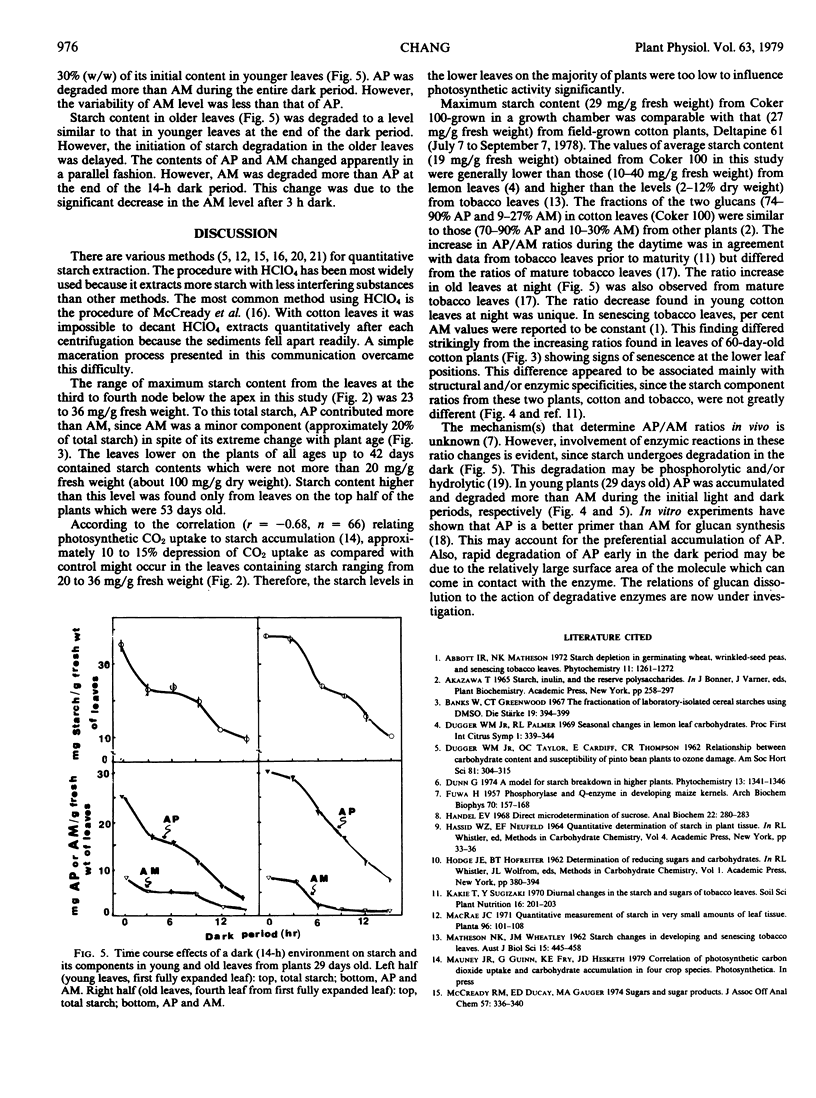Abstract
During cotton leaf development, starch accumulation was characterized by an initial rise to a maximum at the second to the fourth leaf from the apex. Then, starch content progressively decreased with leaf age. Starch accumulation was inversely related to the ratio of amylopectin to amylose. Differences between leaves in this ratio resulted from variations in both amylose and amylopectin levels. Fluctuations in amylose levels were more extreme than those of amylopectin.
During the diurnal cycle, amylopectin was accumulated more than amylose in both young and old leaves during the day. During the night, amylopectin was degraded more than amylose in young leaves and vice versa in older leaves. The rate of change of the amylopectin to amylose ratio during the day was consistently higher than that during the night.
Full text
PDF




Selected References
These references are in PubMed. This may not be the complete list of references from this article.
- FUWA H. Phosphorylase and Q-enzyme in developing maize kernels. Arch Biochem Biophys. 1957 Jul;70(1):157–168. doi: 10.1016/0003-9861(57)90089-9. [DOI] [PubMed] [Google Scholar]
- Ozbun J. L., Hawker J. S., Preiss J. Multiple forms of -1,4 glucan synthetase from spinach leaves. Biochem Biophys Res Commun. 1971 May 7;43(3):631–636. doi: 10.1016/0006-291x(71)90661-9. [DOI] [PubMed] [Google Scholar]
- Peavey D. G., Steup M., Gibbs M. Characterization of starch breakdown in the intact spinach chloroplast. Plant Physiol. 1977 Aug;60(2):305–308. doi: 10.1104/pp.60.2.305. [DOI] [PMC free article] [PubMed] [Google Scholar]
- Van Handel E. Direct microdetermination of sucrose. Anal Biochem. 1968 Feb;22(2):280–283. doi: 10.1016/0003-2697(68)90317-5. [DOI] [PubMed] [Google Scholar]


